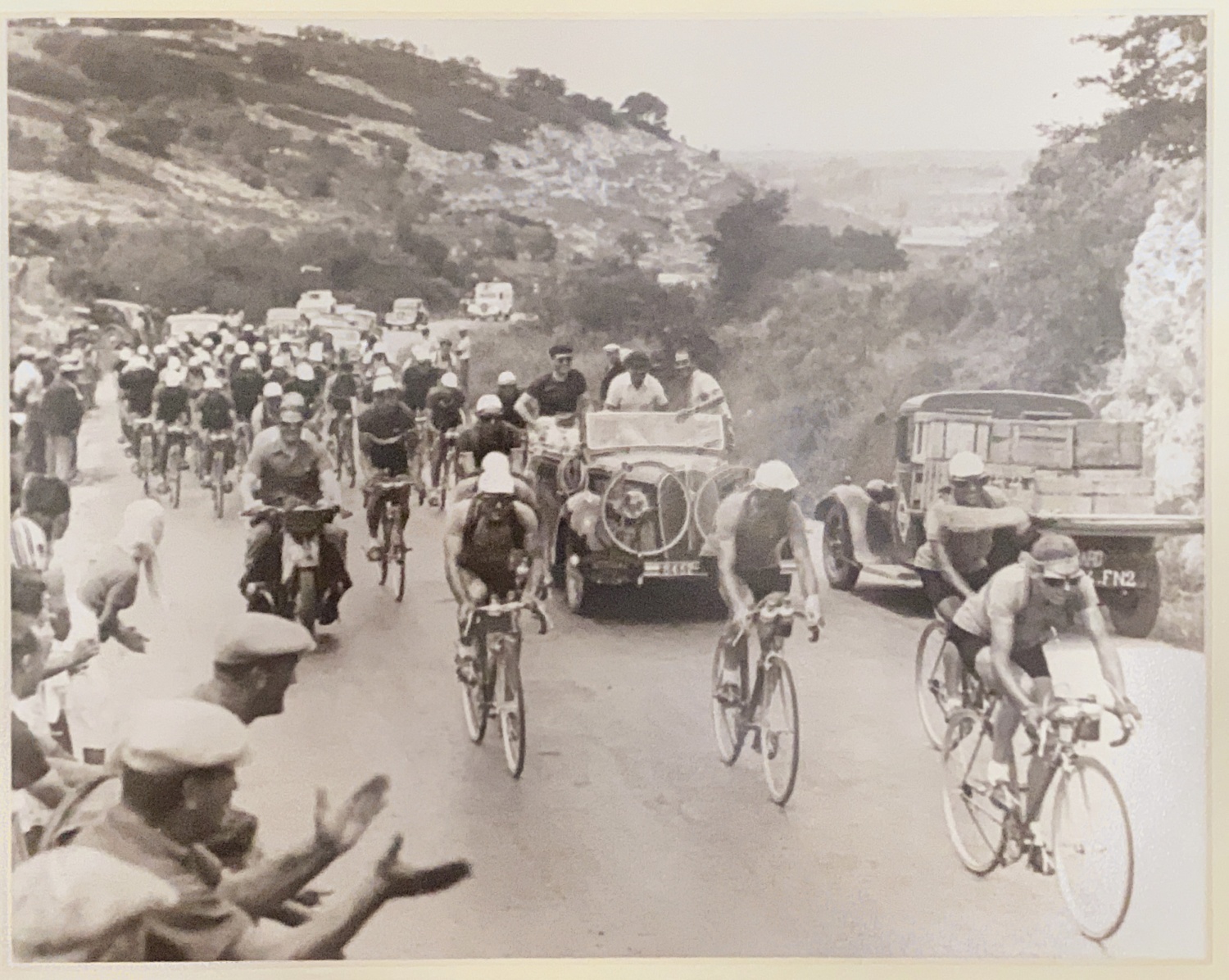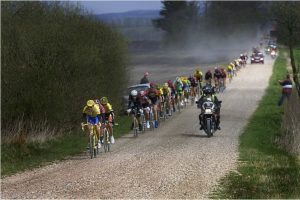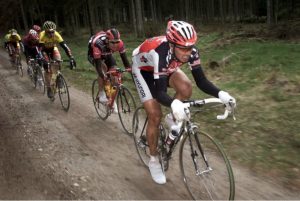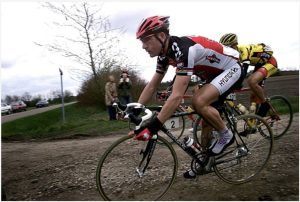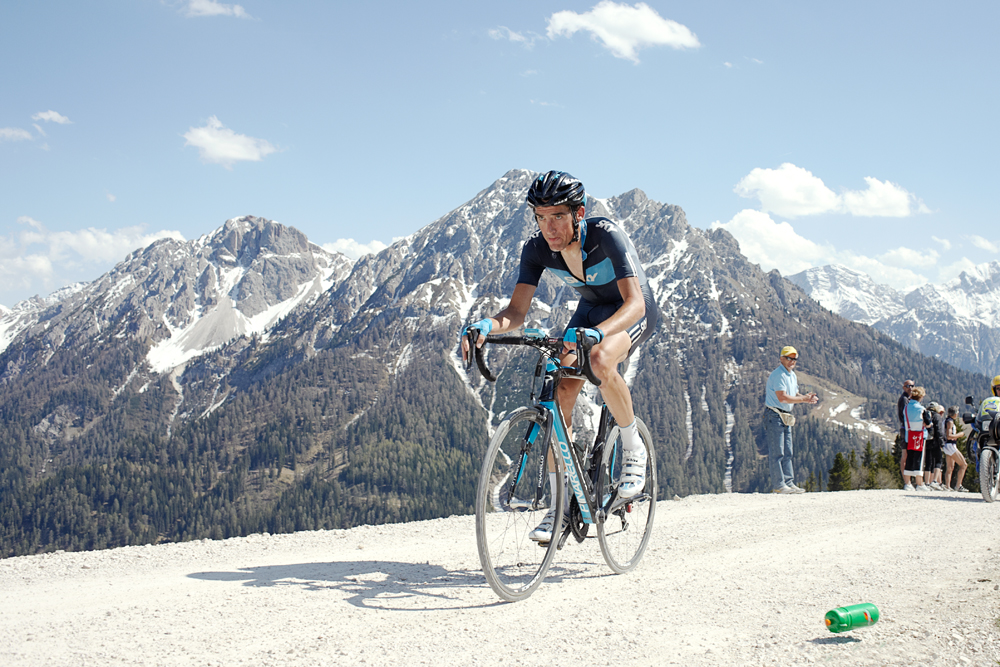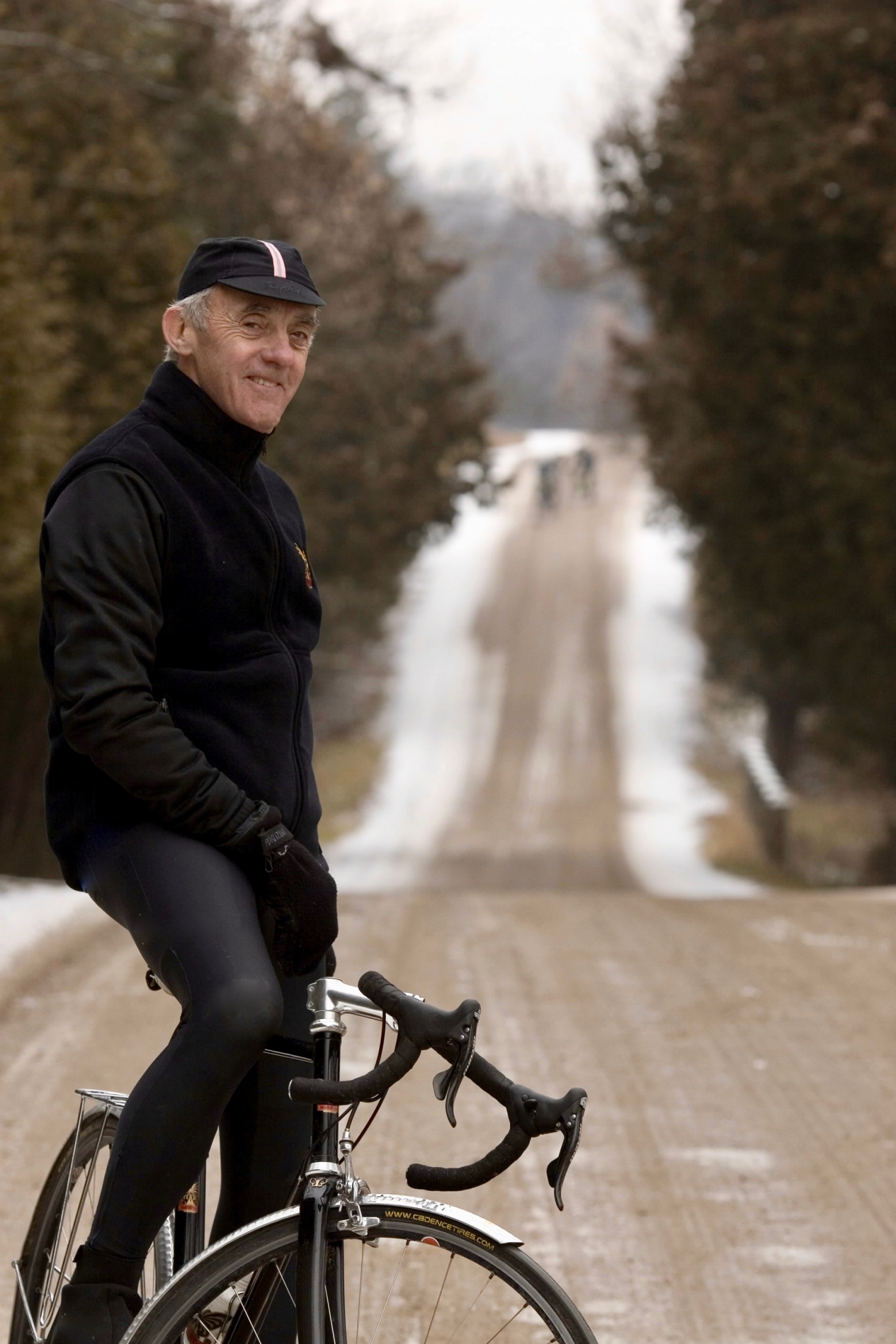By Michael Barry
In the hotel restaurant, teammates sat quietly around the table as the rising sun sliced a shaft of light through the window. Some sipped coffee, others munched quietly on the warm bread. We would race close to a hundred days a year together. This was our routine, but today’s race was different. Nervous anticipation enveloped the table.
On the start line, nervousness that was rooted in all the unknowns a race on dirt and tarmac would bring, formed a cloud over the peloton. On the way to the race, I had paged through the race book, memorized the key points of the course, scanned the past champions—Bjarne Riis had the record number of victories—and made note of our key competitors. It was 2001, we were in Herning, Denmark. The race course would have us charging towards gravel roads, fighting for position, and then snaking our way along a farmer’s track, fighting through a cloud of dust, holding our bars, bumping elbows, and hoping the rocks wouldn’t cause a puncture or worse, a crash. The race would finish near the town centre on a loop with a tough gravel sector, which would draw the spectators, and likely decide the outcome.
Racing on the gravel at the 2001 Herning Tour in Denmark 2001 with the Saturn Cycling Team. Far right, Laurent Jalabert & Michael Barry.
Gravel races mapped out over dirt farm roads have spotted the race calendar across Europe and North America for decades but didn’t become popular until recently. Most were amateur events that attracted local clubs and few were professional. One of the few was the Saturn Cycling Classic in the early 2000’s organized by Len Pettyjohn. It was a tough race in the Rocky Mountains that went from Boulder, Colorado to Breckenridge and was sponsored by the Saturn car company. The course was the hardest on the US race calendar as it featured several climbs up and over 10000 feet, many on rough gravel roads. The event was one of the most prestigious as it attracted the best riders in the country with a rich prize purse and a car going to the winner. For the long rough gravel descents, riders switched to mountain bikes, and then back to their road bikes as soon as the road smoothed. In the thin Rocky Mountain air, riders looked for every advantage as the race shredded the peloton and depleted the riders.
The early gravel races were a novelty, as they took pelotons that were accustomed to riding on smooth tarmac with skinny 23 mm tires onto terrain that provided a fresh challenge. The courses and conditions brought out the child in the racers: like a playground scrap, there was pushing and shoving for position, dust and mud, slipping and sliding, and scrapes and bruises. Most importantly, there was the element of a new adventure in a race that was full of unknowns. For the handful of riders who raced cyclocross during the autumn and winter months, it was an opportunity for them to use their bike handling skills and understanding of tire pressure against a peloton of inexperience.
In the mid 2000’s, with the growing success of Eroica (a vintage bicycle rally across white gravel roads in Tuscany where cyclists from across the world gather to ride their classic vintage bikes over challenging and rough terrain), professional World Tour races started to include gravel sections. The parent company of the Giro d’Italia, the RCS, organized Strada Bianca, a professional race on similar terrain to Eroica. They included gravel sectors in the Giro. Some professional riders relished the challenge while others felt the dirt had no place in modern cycling. The novelty brought a thrill to both the riders and the roadside spectators.
The races drew an audience as the multiple variables of the courses created a new storyline while the images evoked a past era where cyclists who rode through the dusty countryside were international icons. Before the roads of Europe were mostly tarmacked, many races took place on dirt or cobbled roads, especially when the riders took off into the high mountains or remote countryside. In clouds of dust, the riders’ skeletal faces were glazed with dirt and sweat. Spare tires were wrapped around their shoulders. Crowds of well dressed spectators cheered from the roadside, while the race directors’ hung out of the cars, cigars in their mouths and fedoras on their heads. The courses and conditions made the racing as much of a test of endurance and steely will as one of speed.
1939 Tour de France Montpellier to Marseille Stage
1936 Tour de France: Bains to Grenoble Stage. Rider: Archambaud
Modern brands, like Rapha, embrace the past in their marketing, draw on the romantic nostalgia, and educate their clients on the rich history of the sport and its icons, which has only sparked further interest in gravel racing and adventure riding. By the late 2000’s, gravel riding had heavily influenced the industry and ‘gravel’ bicycles and clothing soon had their own unique category in the marketplace. Hoping to capture a piece of the profits the boom had generated, the UCI, cycling’s governing body, added a gravel world championships to the numerous disciplines to which they already award titles, arguably diluting the value of the World Champion’s rainbow jersey.
As with all trends, there will be a pinnacle, and like mountain bike racing in the 1990’s, cyclists will move on while the discipline will evolve as novelty becomes routine.
Mass participation endurance gravel races in North America, like Unbound, which have become feature events on the North American professional racing circuit, have proven difficult to broadcast to an online audience, as the races are long grinds that split the peloton into small groups, while the courses make camera access difficult. The races quickly become tedious affairs to those watching from home.
To attract an audience and grow the discipline, perhaps, there is a future in gravel circuit racing: the races would be easier to film and more exciting for spectators to watch as they would see the riders numerous times. For organizers, circuit races also make it easier to control safety and road closures.
For developing racers, mass start gravel races offer a chance to line up at the start with professionals, a benchmark their performance and provide windows of opportunity to shine early in their careers.
Another beautiful aspect of mass participation gravel events, and perhaps one of its long term opportunities, lies in the fact that from a participative standpoint, it is attracting a more diverse demographic of cyclists than other cycling disciplines. The notion of all bodies on bikes has never been more prevalent in the sport of cycling. The courses are usually fun, challenging and novel, so no matter the level of cyclist, whether racing to win or rolling through hours off the back, it’s a memorable and usually a very positive experience.
Opportunity awaits cyclists and organizers as the events continue to move off the main roads, away from traffic and give us all a great sense of adventure. There will be an ongoing evolution as the discipline finds its place on the professional cycling calendar.
Michael Barry racing up the Plan de Corones in the 2010 Giro d’Italia.
Of all the races I have ridden in my lifetime, many of the fondest memories are from the races that were the greatest challenge with countless variables: the cobbled classics, stages in the Giro on the white Tuscan roads or up the Plan de Corones, Strada Bianca, the dirt events my father ran for decades outside of Toronto….
Mike Barry Sr. on the Hell and Back route in 2005
Two decades ago, in Herning, the team finished tattered but alight. The result was not the focus of our conversations that night, but the adventure of the race.
